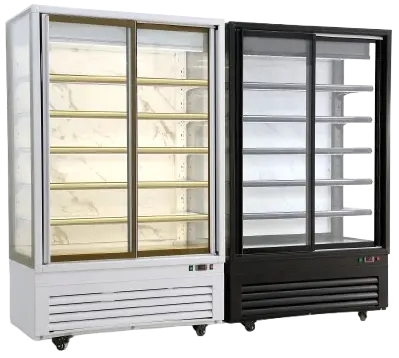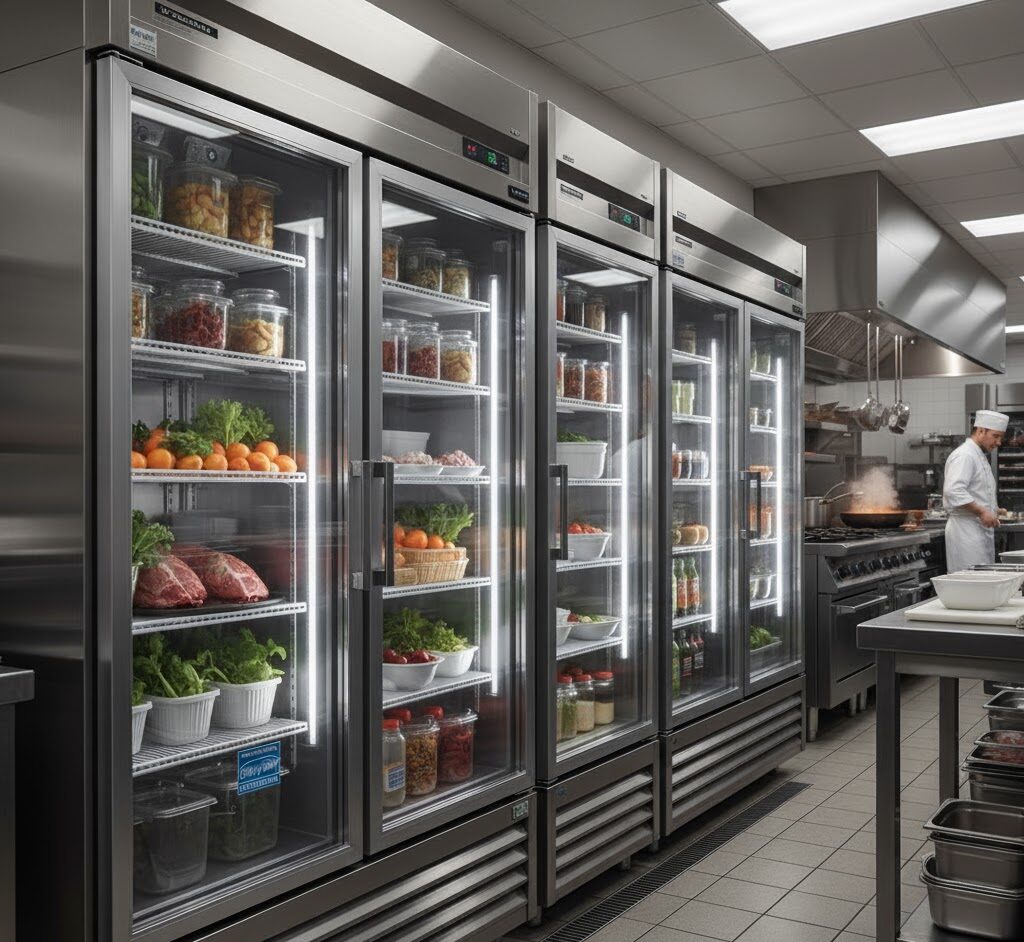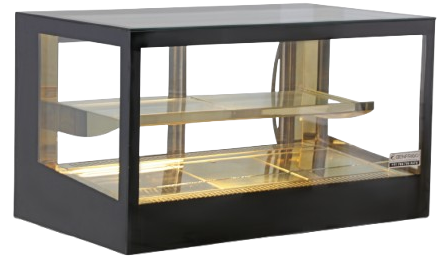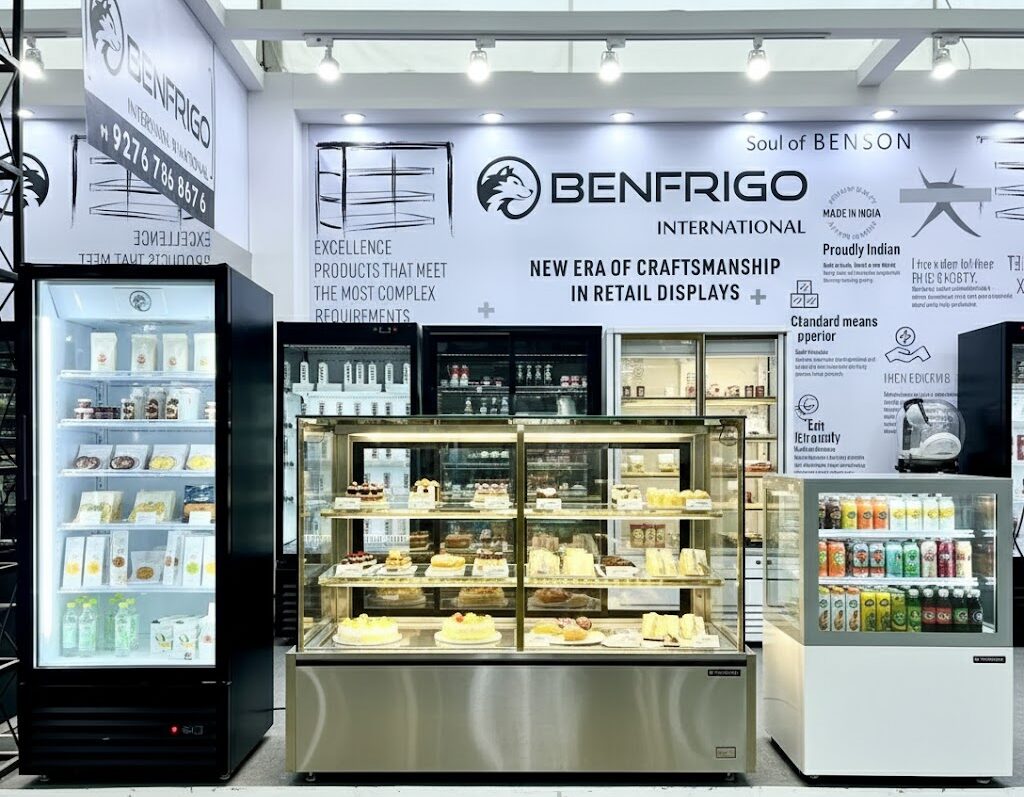The Rise of Self-Service Refrigeration in Modern Retail
October 3, 2025 By: admin

Self-service refrigeration units are becoming a must-have component in the retail settings of the modern world, where convenience is the sovereign ruler. The requirements of open, convenient, and grab-and-go cooling systems are on the increase in cafes to convenience stores, supermarkets to quick-service restaurants (QSRs), and more. Self-service display fridges in particular, the self-service drinks fridges are an attractive mix of prominence, availability, as well as the freshness. We will discuss why they are useful, what to consider when purchasing them and how they are changing the world of retail fridges.
What Is a Self-Service Fridge?
At its simplest, a self-service fridge (or self-service display fridge) is a refrigerated unit designed for customers to serve themselves, without assistance from staff. Rather than a closed door or behind-the-counter setup, self-service fridges are often open-front (or semi-open) units or low-threshold units that allow quick access. They are commonly used for chilled beverages, ready-to-eat foods, sandwiches, salads, desserts, dairy, and other perishable goods.
They are referred to as self-service drinks fridges when they are used specifically to store drinks. They are designed to present bottled or canned drinks in a very attractive, chilled and accessible way. The unit is supposed to have stable and regular temperatures and make products visible and accessible.
Why Retailers Are Embracing Self-Service Refrigeration
1. Increased Sales via Impulse Purchases
The increase in impulse purchases is one of the greatest impetuses. The closer the chilled products to the arms reach, the more the customers will take an additional beverage or snack as they are shopping. The availability and accessibility reduce the obstacle to the unplanned sale.
2. Labor Efficiency
Self service fridges limit the interference of staff. Customers can self-service instead of staff having to fetch items by going behind the counters. This will free the employees to concentrate on other activities such as restocking, cleaning, or customer support instead of spending most of their time retrieving the items.
3. Product Visibility & Merchandising
These are units that are supposed to display products in a way that is appealing. Lighting in shelving with LED-lights, transparent (or open fronts) side shelving, and judicious shelf layout can also contribute to making sure the products are noticeable. Retailers can highlight high-margin products or those that are trending seasonally with good lighting and layout.
4. Maintaining Freshness & Food Safety
Although the self-service fridges are more transparent, they should still be able to retain safe refrigeration temperatures to retain the quality of the product and avoid spoilage. The self-service units designed by modern are designed with uniform cooling technologies, airflow and insulation in order to have equal cooling effects in all the shelves.
5. Energy Efficiency (When Designed Well)
Energy efficiency is one of the important factors. Sophisticated self-service display fridges are fitted with additional options such as LED-lamps, low-energy compressors, high-efficiency insulation, double-glazed doors (in an enclosed design), and intelligent defrost. These design components contribute to the creation of balance between accessibility and visibility and lower energy consumption.
Key Features of Self-Service Display Fridges
When choosing or specifying a self-service fridge, here are some of the most important features to consider:
Open vs Closed Front Design
- Open-front (no door): Ideal for high-traffic environments. Customers can simply reach in and grab. However, cooling control is more challenging and requires careful airflow and design to maintain consistent temperatures.
- Sliding or swing doors: Some units use transparent glass doors to reduce cold air loss, especially in air-conditioned or ambient settings. Doors also provide a better insulation barrier.
- Half-door or flap system: Some designs use partial glass or flaps to balance accessibility and thermal efficiency.
Shelf Design & Layout
- Adjustable shelving allows flexibility for different product sizes (cans, bottles, cartons, etc.).
- Tilted or “faced-out” shelving can improve product visibility.
- LED strip lighting under shelves highlights products and draws attention.
- Easy-to-clean shelf surfaces help with hygiene and maintenance.
Cooling & Airflow Technology
- Uniform cooling across all shelf levels is vital to prevent “hot spots.” Engineers often design airflow systems that circulate cold air evenly.
- Efficient compressors, evaporators, and smart defrost cycles help maintain consistent temperatures while conserving energy.
- Some units may include special cold-air curtains or barriers to contain the chilled zone in open displays.
Insulation & Construction
- High-efficiency insulation (foam, vacuum panels, etc.) reduces heat ingress.
- Insulated back walls and side walls help maintain internal temperatures.
- Robust construction (metal frames, tempered glass, corrosion-resistant materials) ensures longevity in demanding retail environments.
Lighting
- LED lighting is the norm: low-heat, energy-efficient, long-lasting, and adjustable in brightness and color temperature.
- Strategic lighting placement (top, sides, under-shelves) ensures each product is well-lit and visually appealing.
Temperature Control & Monitoring
- Digital temperature displays allow staff to easily monitor internal conditions.
- Some units may integrate IoT or smart monitoring systems (alarms, remote alerts, data logging) for food safety compliance.
- Automatic defrost capabilities help maintain efficiency and reduce manual maintenance.
Size, Footprint & Modularity
- Units come in various widths, depths, and heights to fit retail floor plans.
- Modular or “tower” systems allow retailers to scale up or down depending on demand.
- Slim or low-height units can be placed near checkouts or in narrow aisles for added exposure.
Ease of Maintenance
- Removable panels and shelves help for cleaning and repairs.
- Service access (rear or side) should be well-designed for technicians.
- Drainage, defrosting, or frost collection should be simple and hygienic.
Applications & Use Cases
Self-service display fridges find utility in a wide variety of retail settings:
Convenience Stores & Supermarkets
These fridges are perfect for placing chilled beverages, juices, dairy, ready meals, or desserts near high-traffic areas. They encourage grab-and-go purchases and reduce congestion behind counters.
Cafés, Bakeries & Delis
Self-service fridges in cafés allow customers to pick bottled drinks, sandwiches, or cold desserts while staff focus on preparing hot items. Display fridges near the counter can drive impulse add-ons.
Quick Service & Fast Food Outlets
In a fast-food setup, placing chilled drinks in self-service fridges helps optimize throughput and reduce bottlenecks at the counter. Customers can pick their own drinks while staff manage ordering, cooking, and payment.
Hotels & Hospitality
In lounge areas, breakfast areas, or beverage counters, self-service display fridges offer guests convenient access to chilled drinks, fruit juices, milk, or bottled commodities.
Workplaces & Institutions
Offices, corporate cafeterias, hospitals, schools, and institutional cafeterias benefit from self-service fridges to allow staff, students, or visitors to quickly access chilled refreshments or food items.
Design & Best Practices for Retailers
To maximize the benefits of self-service refrigeration, retailers should adopt thoughtful strategies in placement, layout, stocking, and operations.
Strategic Placement
- Near high-traffic zones: Place self-service fridges where foot traffic is highest — near entrances, end-caps, checkouts, or main aisles.
- Complementary to product flow: Align the fridge position with customer pathways so that customers naturally pass by it.
- Avoid direct sunlight or heat sources: Position away from windows or heat-emitting appliances to reduce the cooling burden.
Effective Merchandising
- Use eye-level shelves for best-selling or high-margin items.
- Group complementary items (e.g., bottled water with energy drinks, yogurt cups with fruit cups).
- Rotate products regularly to prevent expiry or spoilage.
- Use signage and labeling to guide customers and highlight new or promotional items.
Stocking & Inventory Management
- Stock regularly, especially in peak periods, to avoid empty sections.
- Monitor temperature logs and look for anomalies.
- Use FIFO (first in, first out) to maintain freshness.
- Avoid overstocking, which can block airflow and cause uneven cooling.
Hygiene & Cleaning
- Clean shelves, glass surfaces, and trays regularly.
- Ensure drainage systems or drip trays are drained and sanitized.
- Keep vents free from dust or obstruction.
- Train staff to check for leaks, frost buildup, or coil issues.
Monitoring & Maintenance
- Use temperature sensors and alarms to detect deviations.
- Schedule preventive maintenance (compressor check, refrigeration lines, defrost systems).
- Keep replacement parts and filters handy.
- Consider remote monitoring systems that alert staff to failures or temperature fluctuations.
Challenges & Solutions
Self-service fridges are powerful, but not without challenges. Below are some common issues and strategies to address them.
Maintaining Temperature in Open Designs
Challenge: Open-front units can lose cold air, causing less efficient cooling or “warm fronts.”
Solution: Use airflow management (cold-air curtains, directed vents), robust insulation, and efficient compressor systems. Some designs minimize the opening height or use partial barriers to mitigate air exchange.
Energy Consumption
Challenge: Keeping open units cool is inherently more energy-intensive.
Solution: Use energy-efficient compressors, LED lighting, intelligent defrost cycles. Also, placing them in cooler sections of the store and away from heat sources helps.
Product Overheating or “Hot Spots”
Challenge: Some shelf areas may warm due to poor circulation.
Solution: Design the airflow to address vertical and horizontal paths evenly. Avoid over-stocking that blocks airflow. Use fans or ducts to aid circulation.
Maintenance Complexity
Challenge: Open units may accumulate dust or debris more easily, and their cooling systems may be more exposed.
Solution: Design for ease of access, with removable panels and serviceable components. Implement regular cleaning and preventive maintenance schedules.
Shrinkage & Theft
Challenge: Because the products are freely accessible, there is somewhat higher risk of theft or misuse.
Solution: Place the unit within sight of staff, use security covers or sensors for higher-risk items, or integrate mild deterrents (barriers, signage, partial doors). Balancing openness and oversight is key.
Future Trends & Innovations
The self-service fridge segment is advancing rapidly. Some promising trends include:
Smart / IoT Integration
There are more units that include digital monitoring, remote notifications regarding temperature deviations, predictive maintenance, and insights on the use patterns. This intelligence assists operators to optimize stocking, energy consumption and maintenance.
Modular & Customizable Units
Retailers are becoming more able to make units to suit their floor plan and modular systems that are expandable, reconfigurable, and combinable. Flexibility is provided by interlocking units or vertical tower modules.
Eco-friendly Refrigerants & Systems
With increasing environmental regulations, numerous more recent designs use low-GWP (global warming potential) or natural refrigerants (such as R-290 / propane) and more efficient cycles to minimize carbon footprint.
Advanced Insulation & Barrier Technologies
The latest insulating materials (vacuum panels, high-tech foams) and intelligent barrier constructions (electrostatic curtains, adaptive openings) will minimize energy leakage and still have to be accessible.
Hybrid Units (Open + Door)
In some designs, the open sections are combined with the glass-door ones to have the combination of the impulse access with more efficient enclosed cooling. The glass partitions may contain products that are slower moving or those that need a more constant temperature.
Conclusion
Self-service display fridges and Commercial Refrigeration are now becoming a common feature in the retail sector, and they have a strong element of convenience, product visibility, and operational efficiency. Not only do retailers facilitate impulse purchases by locating chilled, ready-to-grab items in locations of easy access, but the retailers also simplify staff operations.
The key to success of these units lies however in clever design decisions balancing accessibility and cooling efficiency, modular flexibility, solid insulation, accurate airflow, and energy management. Combine that proactive hygiene and maintenance regimes and you have a solution that builds on customer experience, operational goals, and future-proofs your retail space. With the advances in refrigeration and display technologies, the self-service fridge is going to become a more prominent part of the retail environment of the future.



Leave a Comment
Your email address will not be published. Required fields are marked *